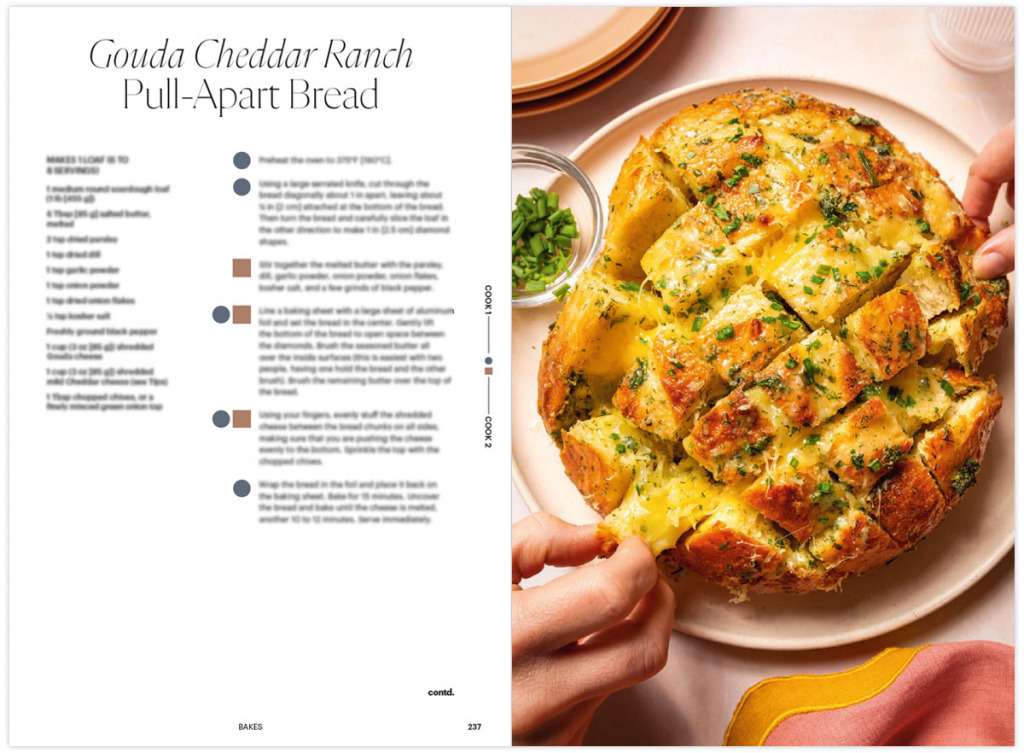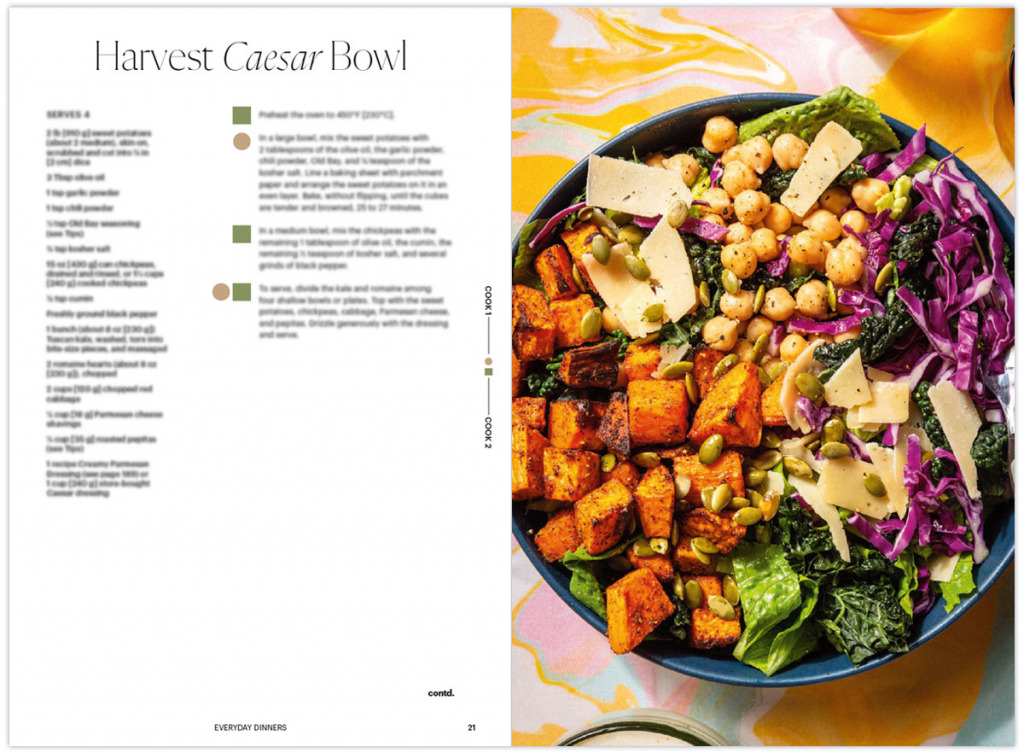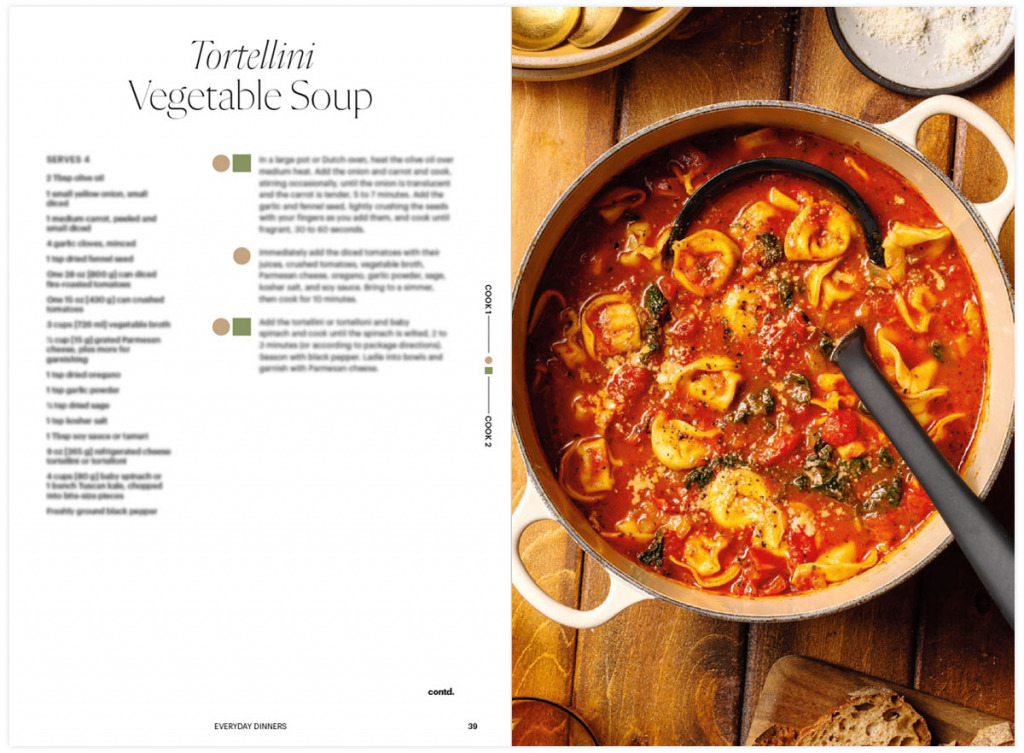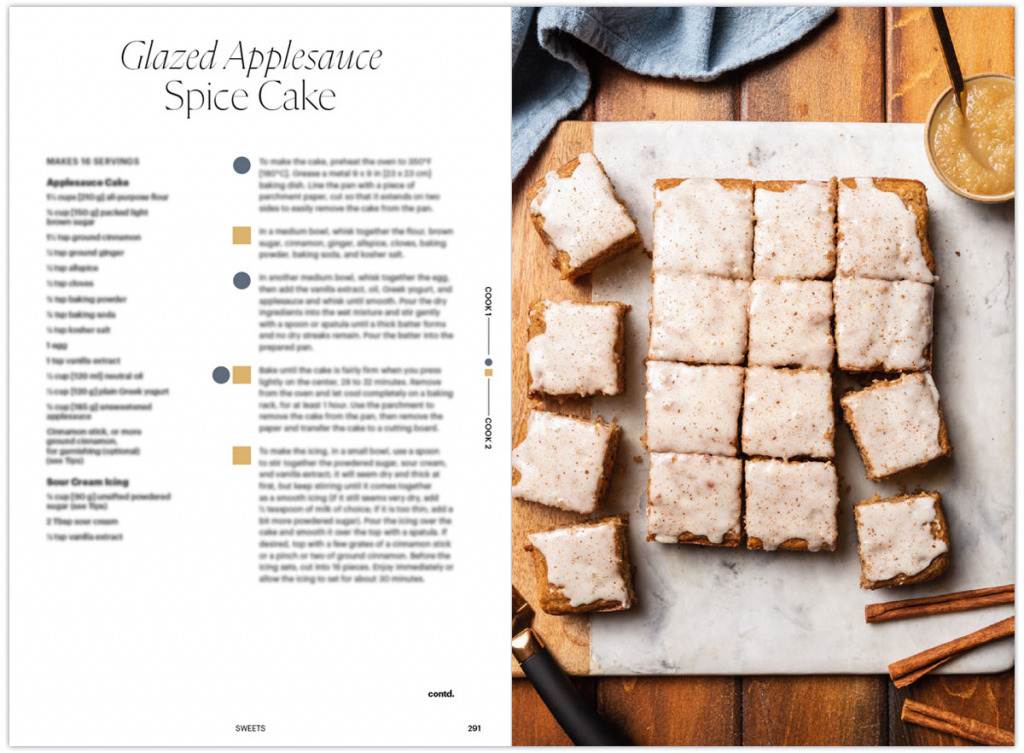Subscriber Benefit
As a subscriber you can listen to articles at work, in the car, or while you work out. Subscribe Now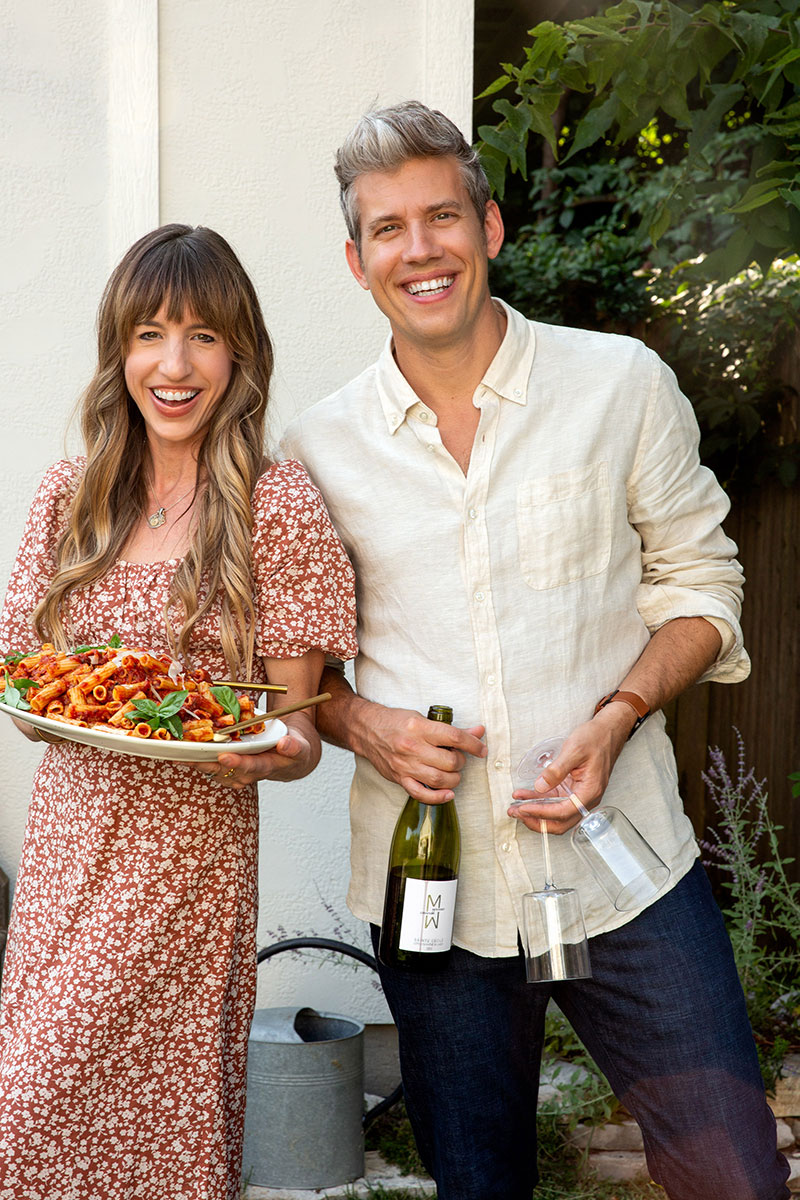
Sonja and Alex Overhiser, founders of the Indianapolis-based food website A Couple Cooks, are set to publish their second cookbook on Oct. 15, more than three years after they conceived the idea and began pursuing a publisher.
It wasn’t a straightforward path, despite their previous experience and a website that already boasts more than 3,000 recipes. But in the end, the book—“A Couple Cooks: 100 Recipes to Cook Together”—is being produced by Chronicle Books, which the Overhisers say is their “dream publisher.”
“We love how they make very giftable books,” Sonja Overhiser said. “The print quality is amazing for this book. There’s metallic on the cover. Just everything about it is very beautiful. And that’s kind of what we were envisioning for our next project.”
The Overhisers launched the A Couple Cooks website in 2010 after they decided to shift their diet from processed food to meals cooked from scratch, something they learned to do together. Their journey has attracted thousands of followers and millions of page views monthly and landed them on the pages of The Washington Post, Bon Appetit, Midwest Living and other magazines, as well as an appearance on “The Today Show.”
The couple talked with IBJ about what it takes to publish a cookbook and how it fits into their overall business strategy.
How did a second cookbook come about? Did you pursue it? Did a publisher pursue it?
Sonja: Like many good projects these days, this cookbook was born out of the pandemic. We had a lot of time on our hands to work on our business, and we started dreaming up a new book. Something about the pandemic sparked our creativity.
Both of these books have been the traditional publishing route. The way that works is, you get a literary agent, and you work with them to create a proposal. And for a cookbook, you come up with the concept around the book, you come up with every single recipe that you want to have in the book as your table of contents, and then you brainstorm a lot of marketing and sales strategies around the book to really sell that concept to a publisher.
So your agent takes the proposal out and shops it to dozens and dozens of different publishers. And our first concept did not get picked up by anyone. It did not get an offer. And for us that was hard as cookbook authors already.
A lot of the feedback we got was that our concept was too general. A lot of the publishers were looking for something a little more niche. And for us, our brand is A Couple Cooks—two people cooking together. And we knew that wedding gifts … is a niche that a lot of publishers like to fill. A lot of gift shops love that kind of thing.
So we decided to narrow down our concept and pitch to just our dream publisher, and … they ended up saying yes.
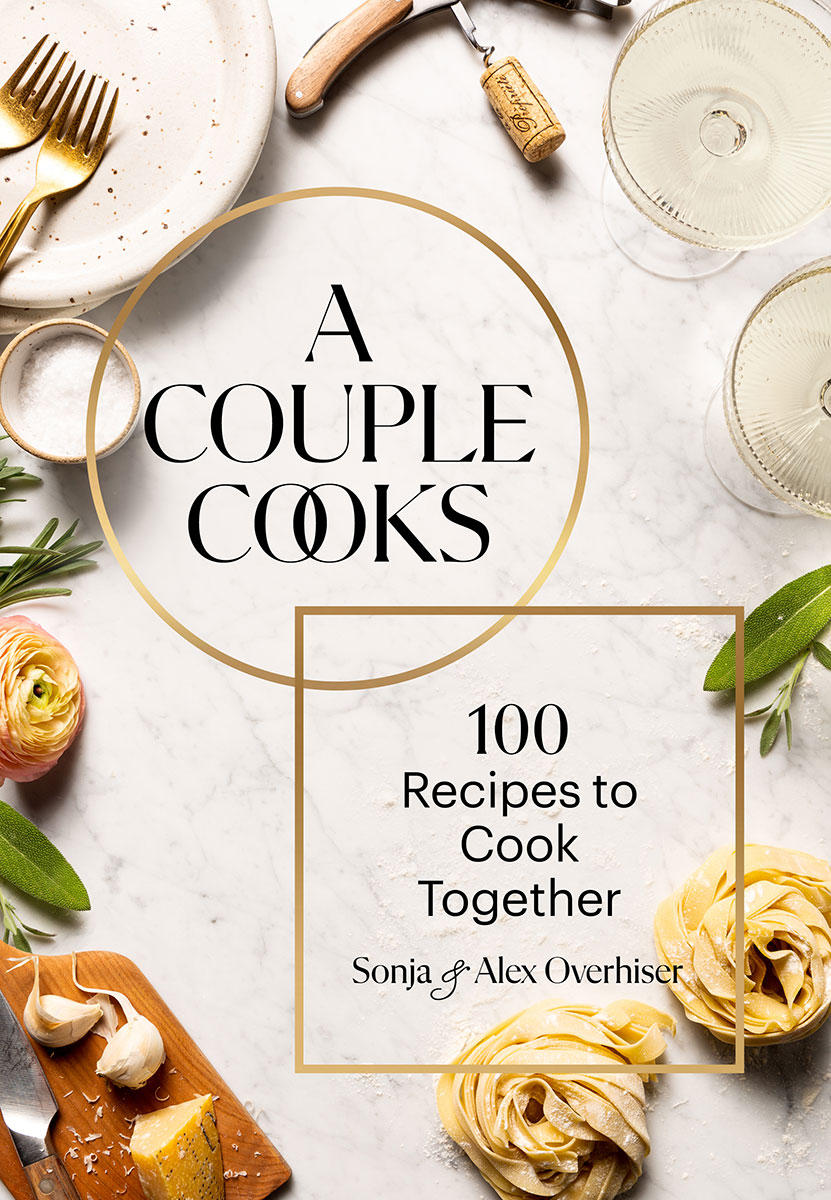
How much of your original concept were you able to save?
Sonja: It’s very similar. So the recipes that were going to be part of that original concept are very similar to what this book is. It’s just branded differently. A really interesting thing about sales and marketing is that you can have the same product and just spin it differently. It might sell amazingly in one package but not in another.
How long has the book taken from start to finish?
Alex: Almost 3-1/2 years. We got the deal 2-1/2 years ago, but it took a year to get the deal.
Sonja: Then it takes a year to produce on our side, and then it takes about a year on their side to do all the editing, the layout, the design, and then the printing and the marketing and all that. So traditional publishing has a very long lead.
Are the recipes actually developed at the point you pitch the book?
Sonja: No. They’re just kind of ideas, and that’s a cool part about writing a cookbook. With a lot of fiction or even nonfiction books, you have to write a big chunk, many chapters of your book in advance. For ours, you can have concepts.
We had 10 sample recipes, but luckily for us, we have thousands and thousands of recipes on our website that we can use as examples of what a recipe might look like. So we were able to brainstorm titles and fill in later.
Alex: We spent a year writing new recipes, having them tested by recipe testers and then turning that into the manuscript. Then we also hired out the photography for this book. I do all the photography for our website, but we decided for the book to hire it out.
Are all of the recipes new?
Sonja: There’s a few that are favorites from the website. They’ve all been a little bit kind of polished up and retooled. Typically, publishers will want at least 80% to 90% new in a cookbook.
Have your recipes changed much from the first book to the second one?
Sonja: This cookbook is written for people of all diets. Our first cookbook was vegetarian and vegan because that was kind of how we had started as a recipe website. We focused on a lot of plant-based eating and celebrating vegetables. For this book, we wanted it to just be for all people.
We also have evolved in our diets. We’re eating a little bit more seafood and poultry. We’re pretty true to our roots of a lot of vegetable-forward cooking, but we do have plenty of meat options—even red meat made an appearance in the cookbook.
How did you integrate the idea of cooking together?
Sonja: Our designer came up with a brilliant idea of adding these square and circle icons next to each step. So the icons will indicate whether one person or a second person should be doing each step or doing it together.
Then we also have tips throughout the book kind of sprinkled in on how to cook together.
What are some of those tips for cooking together?
Sonja: One is, embrace different work styles. Some people have a linear brain. And some people have kind of a cloud way of thinking—all the different things all at once—which is kind of me. [Alex] is kind of a linear person. So embrace those different styles.
Another thing we talk about is delegating roles when you’re in the kitchen. So having one person be like the lead or the head chef as we call it and the other person be the sous chef. You rotate those roles.
And then another one is just learning to admit when you’re wrong or you’re both right. And this is something that really plays into our relationship as spouses working together and running a business together. We’re constantly having disagreements around differing opinions. You have to learn to say, “Let’s try it your way.”
Alex: Right. You could add parsley or cilantro. It’s not like there’s one right choice. When we’re developing a recipe, we have learned to admit that we can both be right.
Do you cook all your meals together?
Alex: We don’t cook together every meal. The idea is that when you cook together, you can celebrate and find joy. But a lot of times, one of us will be preparing dinner. It’s not like we think you have to spend every moment together in the kitchen, but if you do, enjoy it.
What do you find harder: cooking together or running a business together?
Sonja: I think probably running a business together. It’s harder because you’re making these really big business decisions that are a lot more weighty than, say, should the garlic be minced or should there be another quarter teaspoon of salt in this recipe?
How does the cookbook fit into your business?
Alex: Our core business is the website. We use display ads to make money. So that’s getting millions of people to the website and having them make recipes for free. The book is more about building our brand. It’s two separate concepts.
You get an advance to write a cookbook. About half of that went to our photography budget and 15% went to our literary agent. So it’s not a huge financial [win]. We’d have to be putting [cookbooks] out very frequently in order to make that a major part of the career.
What’s the business model after the advance?
Alex: We get a percentage of every sale, but you don’t get any of that money until you pay out the advance. So for our first book, it took five years before we started getting a royalty check—after our sales covered the advance.
What are you doing to promote the book?
Sonja: Pre-orders are really important for authors. They’re very helpful to get buzz going around the book. They’re helpful for getting on bestseller lists. All the pre-sales count as first-week sales.
If you want to hit The New York Times Bestseller List, you try really hard to get as many sales as possible before launch. And so we’re doing a lot of marketing right now. We have a newsletter that has a pretty wide distribution list. We have some Instagram stuff. We have giveaways.
We’ve been able to do a really cool collaboration with Golden Hour Books here in town because pre-orders are so helpful for local bookstores as well. We’ve really been trying to drive a lot of our pre-orders to Golden Hour.•
Correction: This Q&A has been corrected to reflect that about half of the advance for the cookbook went to photography budget and 15% went to the Overhisers’ literary agent. You can see more corrections here.
Please enable JavaScript to view this content.

